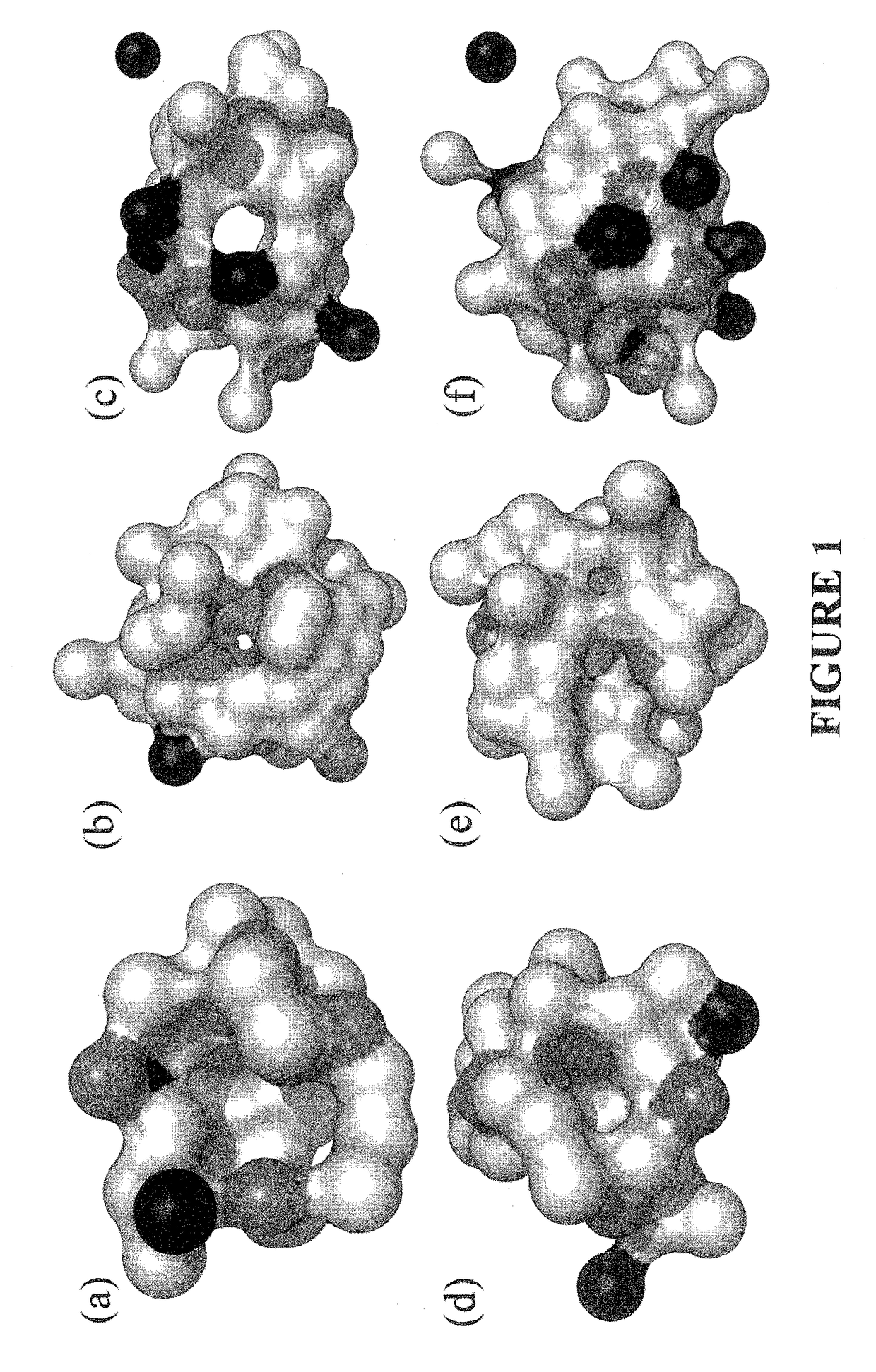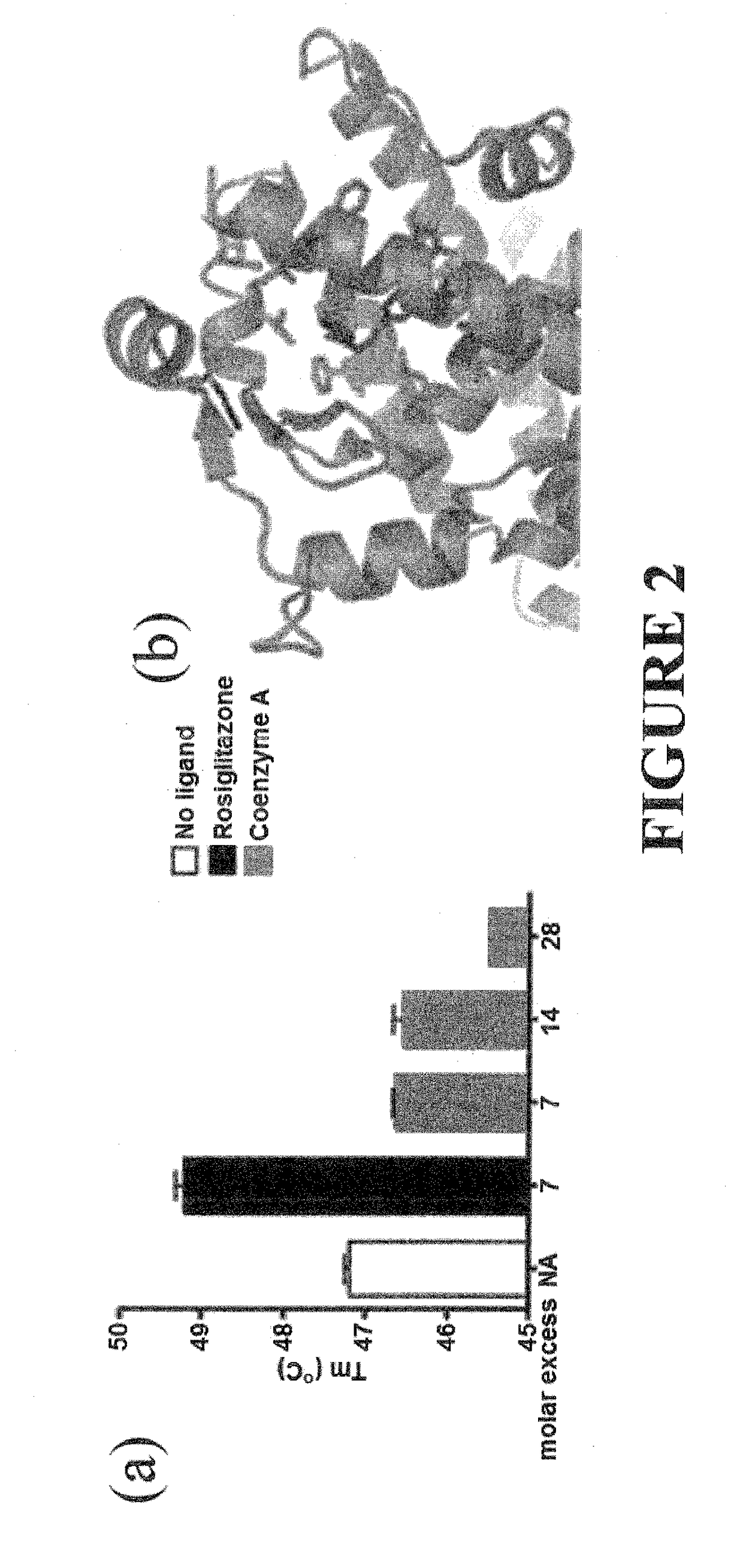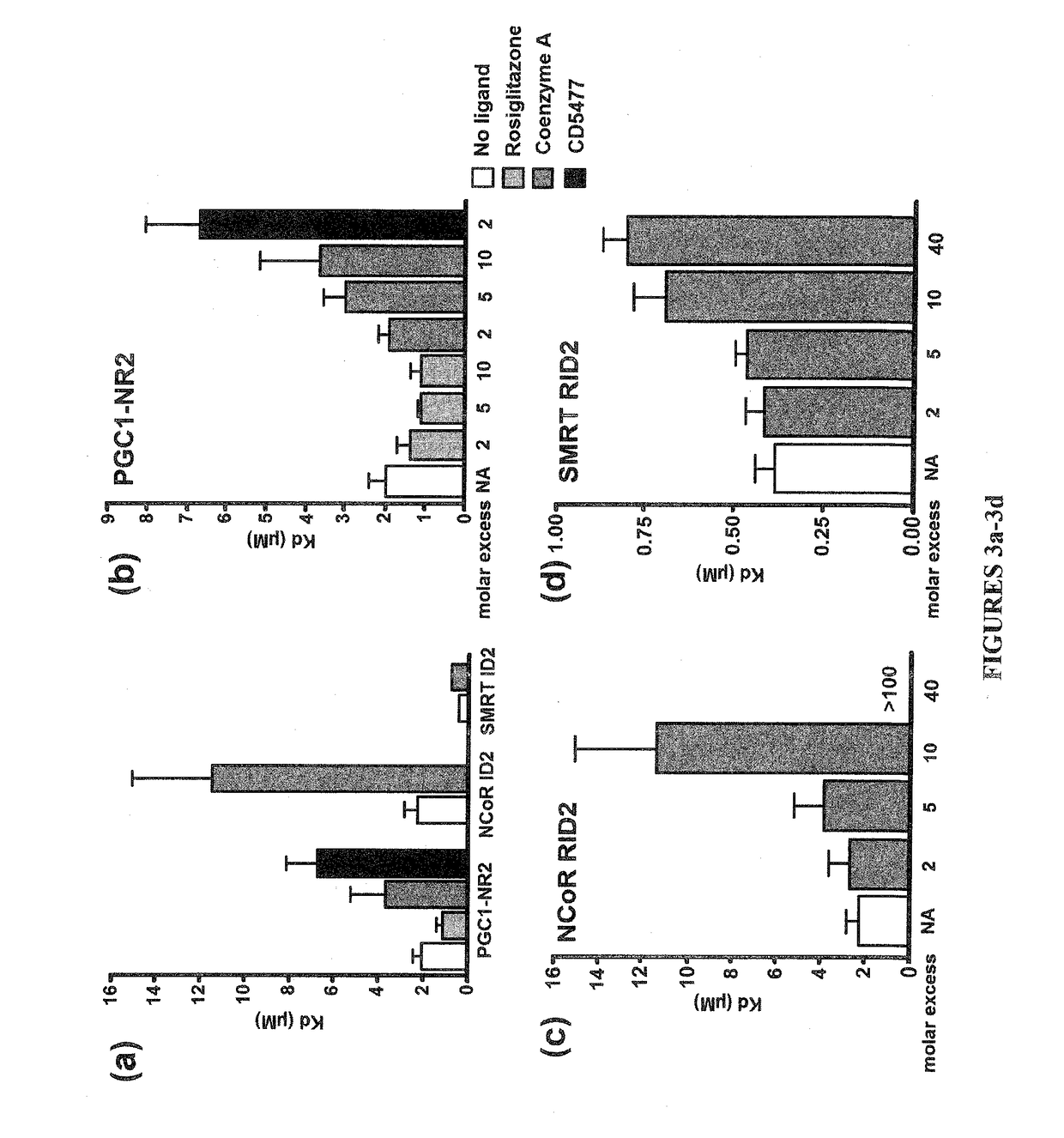Methods and systems for identifying ligand-protein binding sites
a technology of ligand and protein, applied in the field of methods and systems for identifying ligand protein binding sites, can solve the problems of methods that do not provide an assessment of their performance, and high failure rate of new drugs in clinical trials
- Summary
- Abstract
- Description
- Claims
- Application Information
AI Technical Summary
Benefits of technology
Problems solved by technology
Method used
Image
Examples
example 1
An Integrated Structure- and System-Based Framework for Identification of New Targets for Metabolites and Known Drugs
Constructing the Probabilistic Pocket Ensemble (PPE)
[0088]An inherently promiscuous drug may bind to different protein pockets with a range of features, making it difficult to establish a general description of the drug's possible binding sites. To capture the essential binding site features of a promiscuous drug, we developed a method to construct the PPE of this drug (see Methods section for details). The PPE represents a unified set of individual pockets that potentially bind to several conformations of the drug. Each position in the PPE can consist of a number of atoms from different residues. The frequency of the atoms and residues at each position is recorded and used to construct a maximum likelihood sequence similarity scoring function. This probabilistic scoring method adequately accounts for the fact that a drug can bind several pockets and a pocket can bind...
example 2
REFERENCES FOR EXAMPLE 2
[0190]60. Dundas, J., Adamian, L. & Liang, J. Structural signatures of enzyme binding pockets from order-independent surface alignment: a study of metalloendopeptidase and NAD binding proteins. J. Mol. Biol. 406, 713-729 (2011).[0191]61. Gao, M. & Skolnick, J. A comprehensive survey of small-molecule binding pockets in proteins. PLoS Comput Biol. 9, e1003302 (2013).[0192]62. Tseng, Y. & Liang, J. Estimation of amino acid residue substitution rates at local spatial regions and application in protein function inference: a bayesian monte carlo approach. Mol. Biol. Evol. 23, 421-436 (2006).
SI TABLE 1Co-citation comparison between predictions using tissue expression data only versus thepredictions using the sequence, structure, and expression data. We constructed 3 sets from the 99genes whose mRNA expression profile matched the aDDP of β-D-glucose exactly. the first set consistedof the 10 genes that had the best sequence and structure similarity scores when aligne...
example 3
De Novo Drug Discovery
[0193]For a new drug the following protocol can be followed to used our methodology[0194]1. Potential binding partners can be identified from a list of commonly observed protein targets (e.g. Nature Reviews Drug Discovery 5, 821-834 (October 2006)).[0195]2. To test the binding of soluble drugs to the initial list of proteins that can be obtained recombinantly in sufficient quantity, we can use isothermal titration calorimeter experiments or surface plasmon resonance. For less available proteins, or drugs that require particular solvents such as DMSO, we can use methods such as microscale thermophoresis or differential scanning fluorimetry. Many known protein drug targets can be obtained readily commercially, and many expression plasmids are available in the non-profit ADDGENE database.[0196]3. To obtain the binding site of the new drug to one of the above proteins (with sufficiently high interaction strength), we can setup x-ray crystallographic studies.[0197]4...
PUM
| Property | Measurement | Unit |
|---|---|---|
| Tm | aaaaa | aaaaa |
| Tm | aaaaa | aaaaa |
| aggregation temperature | aaaaa | aaaaa |
Abstract
Description
Claims
Application Information
 Login to View More
Login to View More - R&D
- Intellectual Property
- Life Sciences
- Materials
- Tech Scout
- Unparalleled Data Quality
- Higher Quality Content
- 60% Fewer Hallucinations
Browse by: Latest US Patents, China's latest patents, Technical Efficacy Thesaurus, Application Domain, Technology Topic, Popular Technical Reports.
© 2025 PatSnap. All rights reserved.Legal|Privacy policy|Modern Slavery Act Transparency Statement|Sitemap|About US| Contact US: help@patsnap.com



